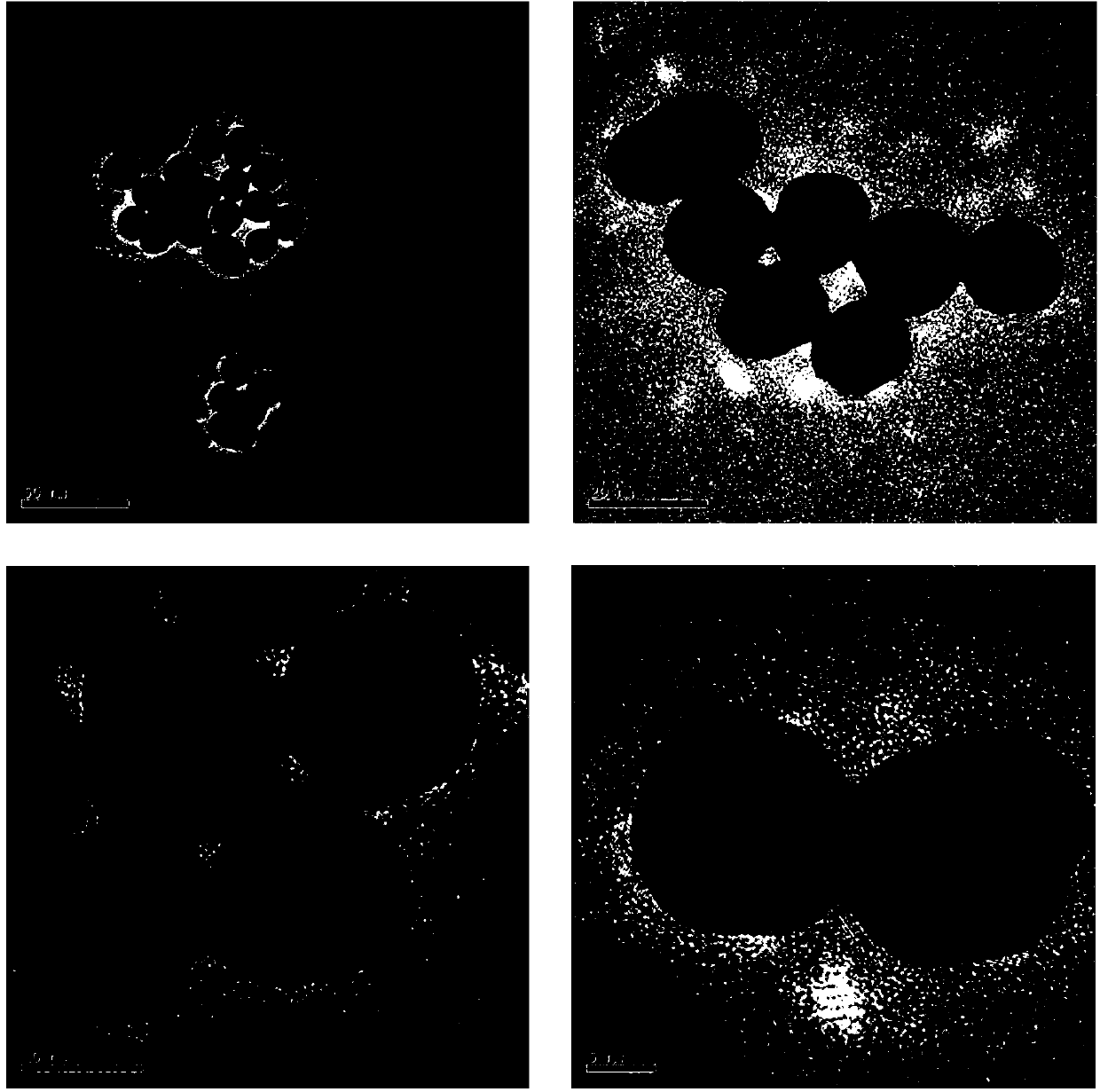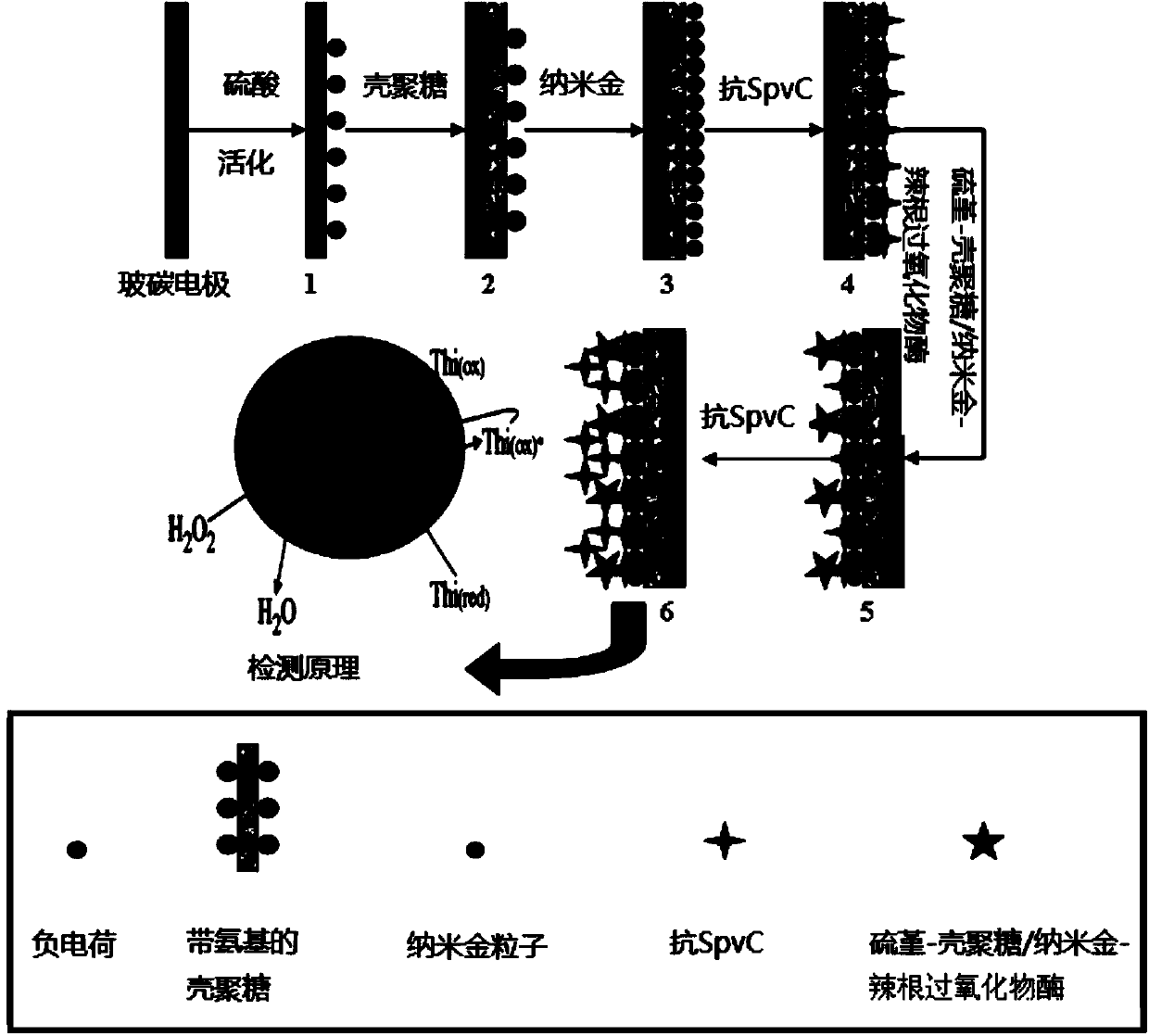Electrochemical immunosensor, and preparation method and application thereof
An immunosensor, electrochemical technology, applied in the direction of material electrochemical variables, scientific instruments, instruments, etc., can solve the problems of high price, strict requirements for test operators, and inability to achieve online detection, and achieves high specificity and high sensitivity. Effect
- Summary
- Abstract
- Description
- Claims
- Application Information
AI Technical Summary
Problems solved by technology
Method used
Image
Examples
Embodiment 1
[0027] The preparation of embodiment 1 sensor
[0028] 1. Screening of anti-threonine phosphate lyase monoclonal antibody strains
[0029] Firstly, using conventional monoclonal antibody preparation methods, the SpvC protein antigen derived from Salmonella was injected into Balb / C mice to obtain monoclonal antibody strains, and then injected into Balb / C mice intraperitoneally, and the ascites was purified to obtain anti-threonine phosphocleavage Synthase monoclonal antibody.
[0030] Then, the anti-threonine phosphate lyase monoclonal antibody strain was screened: the biomolecular interaction instrument Octet Red96 produced by ForteBio Company of the United States was used for this experiment: five Protein A sensors A3, B3, C3, D3, and E3 were taken , five concentration gradient threonine phosphate lyase protein antigens correspond to one of them, the concentrations are: 4μM, 1.33μM, 0.44μM, 0.1481μM, 0μM. The five SpvC monoclonal antibodies used were: A2-E2 (1.129 μM); A3-E...
Embodiment 2
[0052] Embodiment 2 sensor detects Salmonella and / or Shigella
[0053] 1. Prepare standard curve:
[0054] The prepared threonine phosphate lyase double-layer nano-gold membrane electrochemical immunosensor was incubated in the Salmonella suspension diluted in 0.01M pH7.4 PBS buffer at 37°C for 15min (from low concentration to high concentration). Current-time scanning (scanning potential - 0.38V), the steady-state current value (generally the 50th s) is selected as the standard after comparison, and the change △I of the current before and after the detection and the number of Salmonella colonies (according to GB4789.2 "Food Hygiene Determination of the total number of colonies in microbiological examination "to determine the bacterial concentration) plotting, to obtain the linear relationship between △ I and the concentration of Salmonella.
[0055] 2. Sample preparation:
[0056] Choose a concentration of approximately 1×10 8 cfu / mL Salmonella suspension (obtained accordi...
Embodiment 3
[0059] Embodiment 3 sensor stability and reproducibility detection
[0060] The assembled threonine phosphate lyase double-layer gold nano-film electrochemical immunosensor was divided into 1 × 10 2 cfu / mL Salmonella and 1×10 2 The cfu / mL Shigella was continuously measured 12 times in the PBS dilution, and the relative standard deviations R.S.D of the results were 3.23% and 4.11% respectively; the sensor was stored at 4°C above the 0.01mol / L pH7.4 PBS solution, Salmonella suspension (1×10 2 cfu / mL), the current response signal on the 13th day was 86.45% of the initial current, indicating that the sensor has good stability.
[0061] Take 5 immunosensors prepared in different batches, and test the same concentration of Salmonella suspension (1×10 2 cfu / mL), Shigella suspension (1×10 2 cfu / mL) and two mixed bacterial solutions (1×10 2 cfu / mL) were measured, and the relative standard deviations R.S.D. of the response current were 4.12%, 4.66%, and 4.82%, respectively, indicat...
PUM
| Property | Measurement | Unit |
|---|---|---|
| particle size | aaaaa | aaaaa |
Abstract
Description
Claims
Application Information
 Login to view more
Login to view more - R&D Engineer
- R&D Manager
- IP Professional
- Industry Leading Data Capabilities
- Powerful AI technology
- Patent DNA Extraction
Browse by: Latest US Patents, China's latest patents, Technical Efficacy Thesaurus, Application Domain, Technology Topic.
© 2024 PatSnap. All rights reserved.Legal|Privacy policy|Modern Slavery Act Transparency Statement|Sitemap



